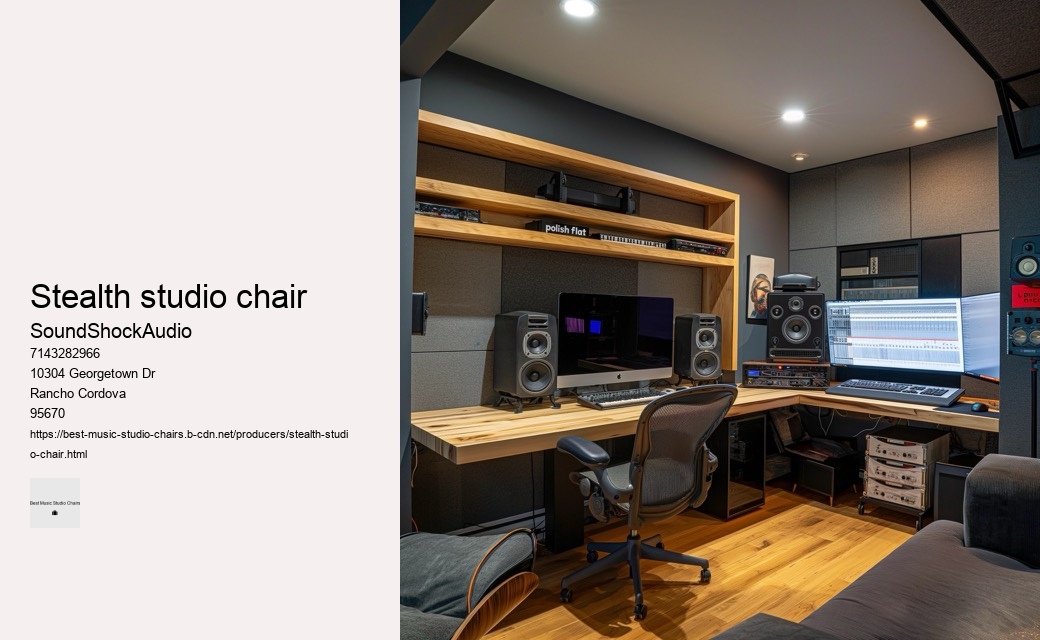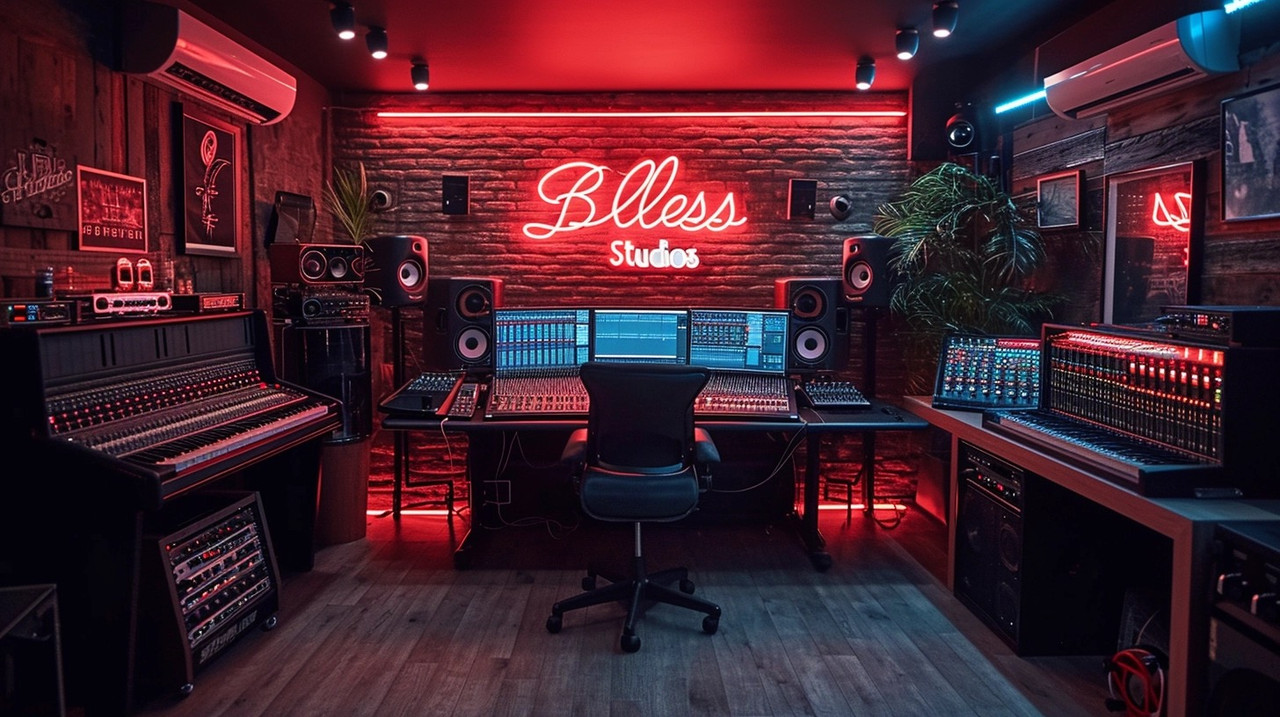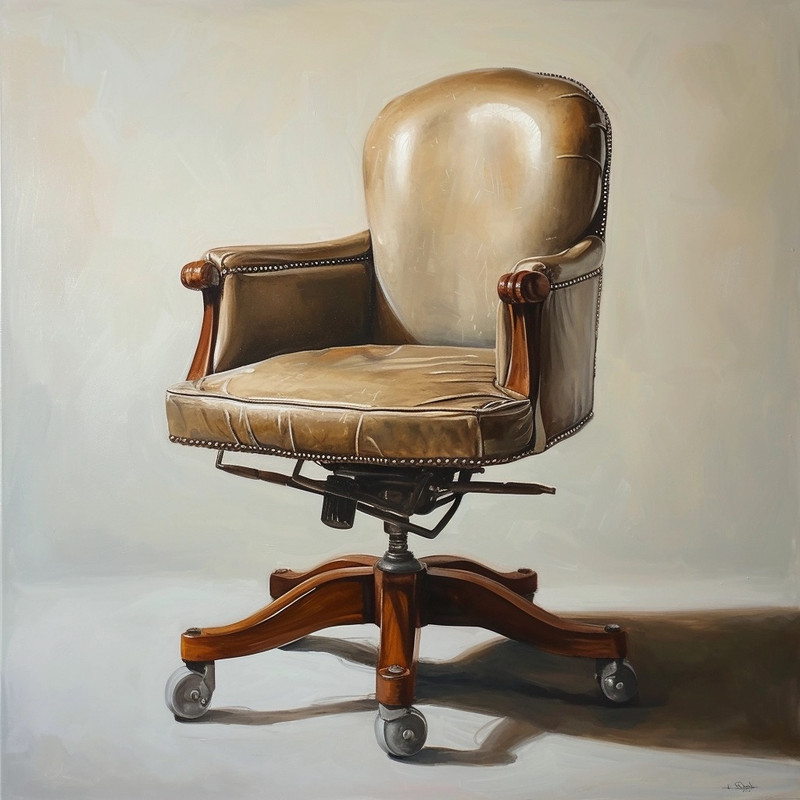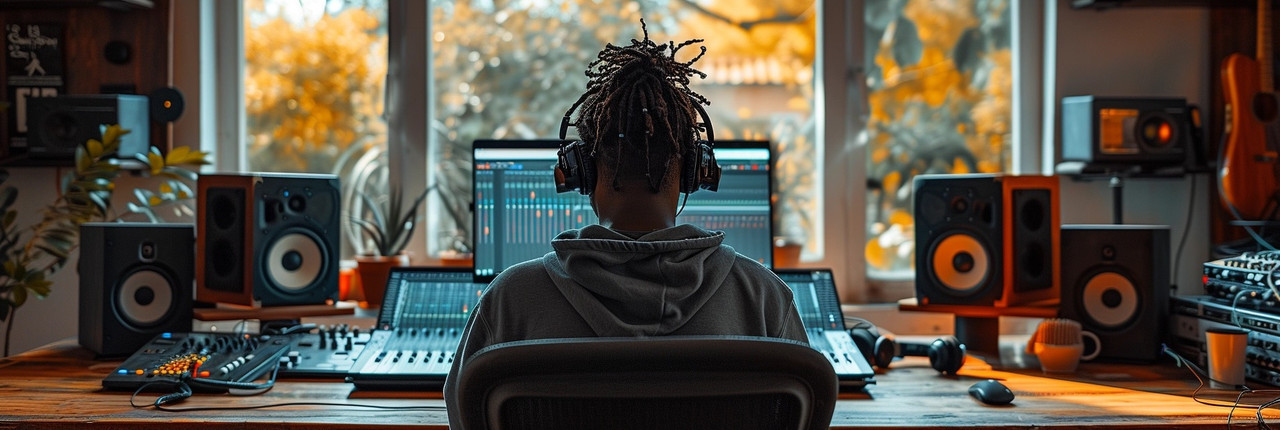

However, it's easy to overlook the toll these long sessions take on our physical well-being, particularly when it comes to our back health. It's about fostering an environment ripe for artistic expression while mitigating potential distractions or discomforts that could mar the creative process—truly an industry secret worth its weight in gold records. However, incorporating this functionality without compromising on style requires an innovative approach—melding practicality with elegance. Selecting the perfect studio chair is akin to composing a harmonious melody; it requires attention to both comfort and style, ensuring that each element resonates with your personal preferences and workspace needs. Through this process, what seems like an ordinary search becomes an exercise in self-awareness—a commitment to nurturing one’s creative soul by providing it with a worthy vessel for exploration.
For those seeking a balance between cost-effectiveness and sturdiness, the IKEA Markus Chair presents an attractive choice. energy consumption Initially, one must acknowledge that ergonomics transcends simple cushioning. In conclusion, while losing ourselves in music production can be deeply satisfying both creatively and professionally, it's vital not just for our art but also for our physical health that we pay attention to what our backs might be missing out on during those long mixing sessions: movement variety; ergonomic support tailored specifically towards us as individuals; periodic rests allowing recovery times between intense focuses; plus ongoing maintenance through targeted exercises outside studio walls alongside professional therapeutic interventions when needed. Furthermore, good posture goes hand-in-hand with peak performance.
The contours are sculpted to perfection, cradling the user in a supportive embrace that defies the conventional rigidity of average office furniture. Mesh or fabric chairs croon comfort and offer ventilation but may not have the durability of their leather counterparts. Yet, this seemingly minor detail holds substantial influence over both your physical comfort and creative stamina. Breathable fabrics such as mesh can help keep you cool under pressure while leather or vinyl might be preferred for their ease of cleaning and sleek appearance.
In the realm of creative endeavors, comfort often becomes the unsung hero of productivity. A fixed lumbar support might not align properly with every user's lower back curve, potentially causing more harm than comfort. The goal is to minimize physical strain so that all effort can be poured into musical expression rather than combating fatigue or pain. The right chair fades into the background, almost unnoticed by its occupant because it fits so naturally into the act of making music.
A sleek design can inspire confidence and even become part of your studio's unique branding. An ultimate comfort chair should have adjustable armrests, lumbar support, and the ability to tilt and swivel with ease. Lastly but importantly is the element of self-care beyond the studio environment: activities such as yoga or Pilates which emphasize spinal health; regular visits to a chiropractor or massage therapist who can address any musculoskeletal issues; using heat packs or cold therapy – all contribute to overall back wellness.
An orchestra pit won’t accommodate giants and pixies alike without adjustable seats. It aims to support your body so well that you barely notice it's there. Ultimately, aesthetics hold peculiar significance; after all, this chair sits at the heart of creativity's temple—the studio—and its design must inspire. A chair should offer versatile adjustments – from seat height and tilt to lumbar support and armrest positioning – ensuring that it can conform to various body types and preferences.
It will result in a composition that may not always make perfect sense or maintain logical coherence, as it deliberately introduces random and potentially unrelated elements into the text.


Mastering Marathon Mixes: How to Stay Comfortable with Top-Rated Studio ChairsWhen embarking on the arduous journey of mastering marathon mixes, comfort can often be the unsung hero that either propels you to new heights or leads to your downfall.
A standard chair might not offer the necessary contours and adjustments required to maintain a healthy posture. Whether opting for industry staples like Herman Miller or Steelcase or going for more budget-friendly yet reliable options such as IKEA's offerings or gaming-oriented seats like those from Secretlab and DXRacer - there exists an array of choices designed to meet various needs while promising longevity. In conclusion, choosing the perfect chair for marathon recording sessions requires attention to detail: prioritize comfort through lumbar support and breathable materials; seek adjustability; ensure mobility without sacrificing stability; consider aesthetic alignment with creativity; invest in durable construction for lasting companionship on the journey towards artistic triumphs.
Ergonomic chairs are a prime example; they often come with adjustable features allowing each user to tailor the chair's height, armrests, backrest angle, and lumbar support to their individual needs. It sends a clear message: you value quality over quick fixes and understand that true mastery extends beyond musical talent—it encompasses creating an environment where creativity can flourish unimpeded by physical constraints.
Your chair does not exist in isolation but amid an ecosystem of gear and decor—it should inspire just as much as it supports. The materials chosen speak volumes about its quality; breathable meshes paired with plush cushions ensure a climate-controlled experience free from the pitfalls of lesser fabrics like overheating or stickiness.
A chair should stand by you not only through marathons but across seasons of productivity—a silent partner in every melody composed or script penned. Cushion Top producers often find themselves glued to their workstations for extended periods, diving deep into the intricacies of mixing and mastering.

Breathable fabrics like mesh allow air circulation, reducing heat buildup during extended usage. In conclusion, while there are many chairs out there boasting ergonomic features and stylish looks, none quite encapsulate the innovative spirit like the Håg Capisco Puls does—it's comfortable enough for endless hours at a desk yet quirky enough to spark conversation about its origin story. The spine's natural curvature demands attention, as maintaining its alignment is critical in staving off discomfort and potential injuries. In the ever-evolving landscape of furniture design, particularly in the realm of studio chairs where comfort and functionality are paramount, one innovative material stands out from the rest: memory foam.
Creating an essay that intentionally selects the least probable word every six words would result in a nonsensical and disjointed text. Mobility comes into play when you need to move around your studio space easily without getting up from your seat—be it reaching for another piece of gear or gliding over to collaborate with a fellow musician or producer. Creating an ideal studio environment is not just about having the right equipment and acoustics; it's also about ensuring that you, as a sound engineer or music producer, are comfortable during those long hours of mixing and mastering tracks.
Comfort is subjective; what may feel like sitting on a cloud for one person could be unsupportive for another. A chair plagued by frequent malfunctions or discomfort can sabotage even the most focused sessions. Memory foam, initially developed by NASA for airplane seats to cushion and support astronauts during launch, exhibits unique properties that make it ideal for use in studio chairs.
Color has power—it can transform the mood within four walls dramatically—and so choosing palettes for studio chairs becomes another layer in this rich tapestry. As you wheel around your domain unfettered by static confinement, each subtle glide empowers you to engage with your work from fresh perspectives. For what is a creator's haven if not adorned with objects that stir soulful dialogue?
Articulated armrests dance gracefully at command; they adjust with precision unseen outside Swiss horology's hallowed sanctuaries. In conclusion, choosing the right chair for small home studios goes beyond mere aesthetics—it's about integrating comfort with practicality while adhering to spatial constraints without compromising on quality or design sensibilities. In conclusion, as mixing down tracks is both artistry and endurance test combined; having an ergonomic chair becomes an essential tool in a producer’s studio arsenal. Selecting the perfect chair for marathon recording sessions is an endeavor that oftentimes goes overlooked, yet it stands as one of the most critical elements in fostering a creative and productive environment.
Adjustability is another key factor. Remember that beating studio fatigue isn't just about having the right equipment—it's about fostering habits that promote well-being both physically and mentally. It's wise to sit down and truly feel whether a chair meets your unique ergonomic needs before committing financially.
Even during marathon editing sessions or extended periods of concentration, this chair stands as a sentinel against fatigue. Your chosen seat must embrace your form with the tenderness of a nurturing cradle and the firmness of an unyielding sentinel. These chairs must not only provide ergonomic support but also enhance creativity through maintaining perfect posture.
Secondly, let's talk about ergonomic support. Ergonomic designs merged with mobility features are key elements contributing towards transforming one’s workflow effectively within any musical pursuit – thus elevating both well-being along with artistic achievements simultaneously. Next time you embark on an auditory odyssey of mixing or mastering music tracks remember—a great studio chair doesn't just keep you seated; it keeps you seamlessly integrated into the heartbeats of melodious precision for countless hours on end.
Yes, expensive office chairs can make a significant difference, especially in terms of ergonomics, comfort, and durability. They are often designed with better materials and more adjustable features to support proper posture and reduce the risk of back pain and other discomforts associated with long hours of sitting. Additionally, they tend to last longer than cheaper options, potentially making them a better investment in the long run for both health and financial reasons.
EDM artists often create their sounds using a combination of software synthesizers, drum machines, and digital audio workstations (DAWs). They also sample sounds from various sources, manipulate them, and layer different elements to create unique textures and rhythms. Additionally, some artists record real instruments or environmental sounds and process them electronically to fit into their tracks. The vast array of plugins and sound libraries available today provides an almost limitless palette for EDM producers to draw from.
Ergonomic chairs are designed to support the entire body, improve posture, and reduce discomfort during prolonged sitting by adjusting to the user's body shape, size, and movements. They often feature multiple adjustments for height, tilt, armrests, and lumbar support. Lumbar chairs, on the other hand, specifically focus on providing enhanced support to the lower back or lumbar region to prevent strain and promote spinal alignment. While all lumbar chairs are ergonomic in nature, not all ergonomic chairs may provide the same level of targeted lumbar support.
Musical chairs is appropriate for children as young as 3 years old and can be enjoyed by kids up to 10 or 12 years old. The game can be adapted to suit the age group playing, ensuring it remains fun and safe for all participants. For very young children, it's important to supervise closely to prevent falls or bumps.